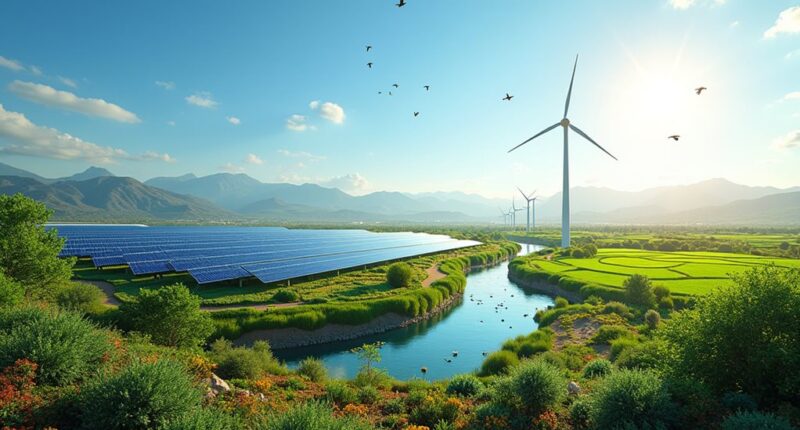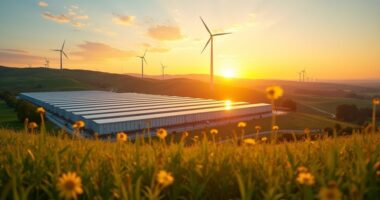Africa’s bold climate action plan seamlessly merges renewable energy growth with innovative finance to combat climate challenges. By 2030, the continent aims for 300 gigawatts of renewable power, tackling the energy access crisis for 300 million people. With an annual financing gap of $130-170 billion, creative investment strategies are essential. Africa, contributing just 3.8% of global emissions, aims to be a leader in sustainability. Curious about how these dynamics are reshaping the landscape? It’s an exciting journey worth exploring!
Africa’s Ambitious Renewable Energy Vision
Africa’s Climate Action Plan is like a master recipe, carefully crafted to blend sustainable development with resilience against the challenges of climate change. It’s a bold strategy, stitching together ambitious climate goals and frameworks that align with the African Union’s Agenda 2063 and the Paris Agreement.
Imagine this: Africa aims to raise a staggering $250 billion each year until 2030 for climate action! That’s the kind of money that could fund a lot of rooftop gardens—if only they could find the right investors.
At the heart of this plan lies a commitment to renewable energy. By 2023, the continent managed to install 71 gigawatts of renewable energy capacity, but don’t get too excited; that’s just 2% of the global clean energy pie. The African Development Bank and World Bank have launched Mission 300 to provide electricity to 300 million energy-poor Africans by 2030, highlighting the urgent need for expanded access to power. This initiative is part of a larger strategy to address the adaptation finance gap that African countries face.
Africa’s renewable energy journey is ambitious, with 71 gigawatts installed, but still just a tiny slice of the global pie.
The African Union has set its sights on a whopping 300 gigawatts by 2030, which means they’ll need to crank out an additional 32.6 gigawatts every year from 2024 onward. Countries like Egypt, Morocco, and South Africa are leading the charge, proving that solar and wind are not just passing trends but essential players in this energy shift. The transition to carbon-free technologies represents a critical step toward combating climate change while creating sustainable economic opportunities.
However, the road is bumpy, with financing gaps that could make a grown investor cry—between $130 and $170 billion annually, to be precise. Innovative funding tools and private sector engagement are stepping up to the plate, attempting to lure in institutional investors like a dog begging for a treat.
Meanwhile, programs such as Mission 300 are promising to electrify 300 million Africans by 2030, because who wouldn’t want to binge-watch their favorite show in the dark?
Africa’s climate strategy is more than just numbers; it includes protecting crucial carbon sinks and embracing anticipatory planning to combat the looming threats of climate change. It’s a balancing act, ensuring that development needs don’t get overshadowed by climate goals.
After all, Africa only contributes 3.8% of global emissions, yet it’s stepping up to lead the way in resilience and sustainability—like a strong athlete in a race where everyone else is sitting on the sidelines.









